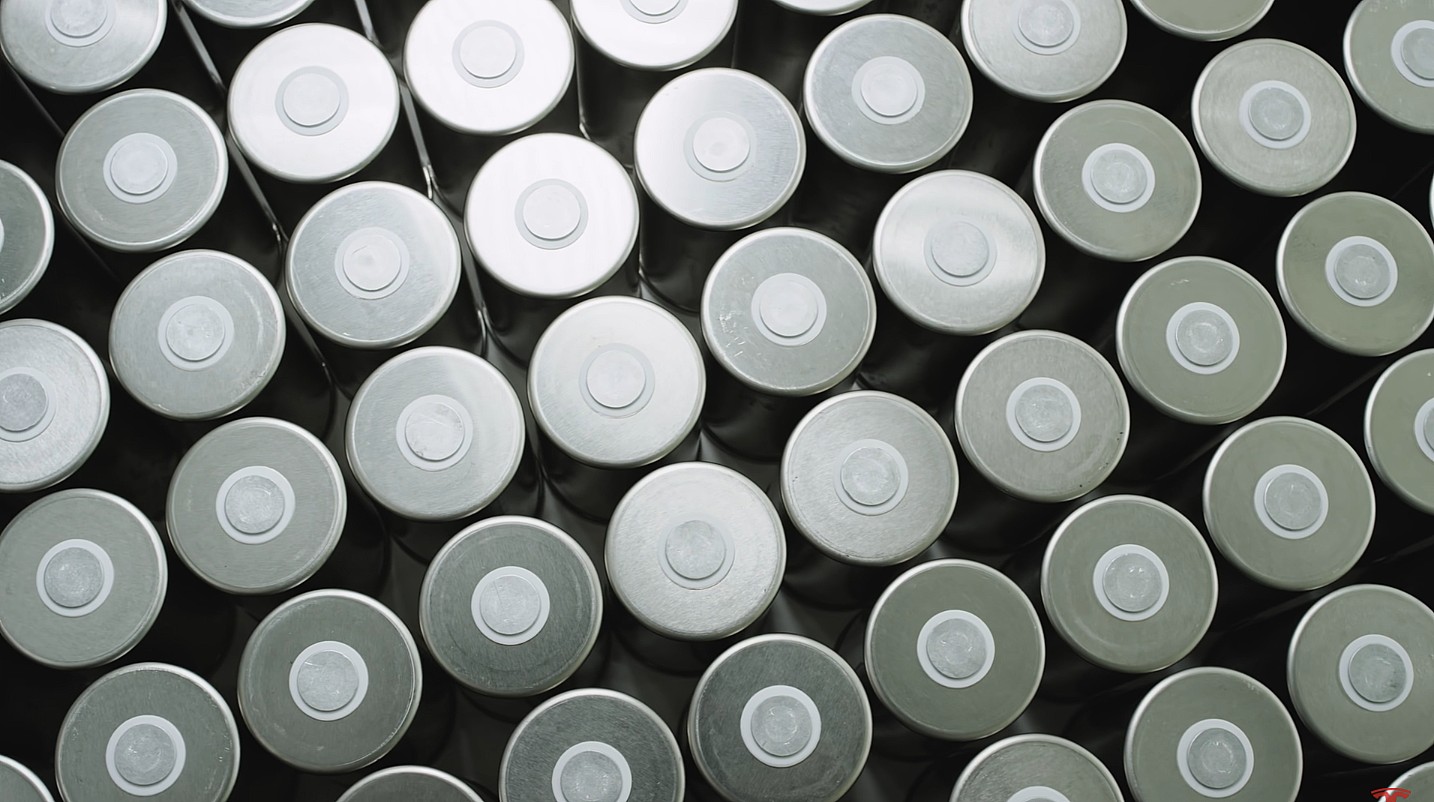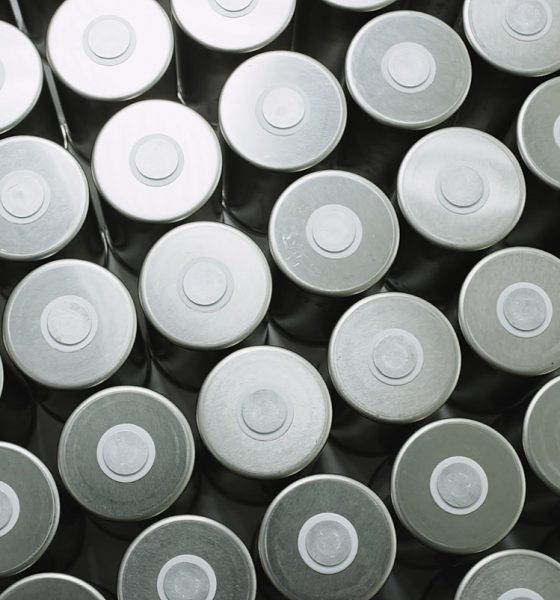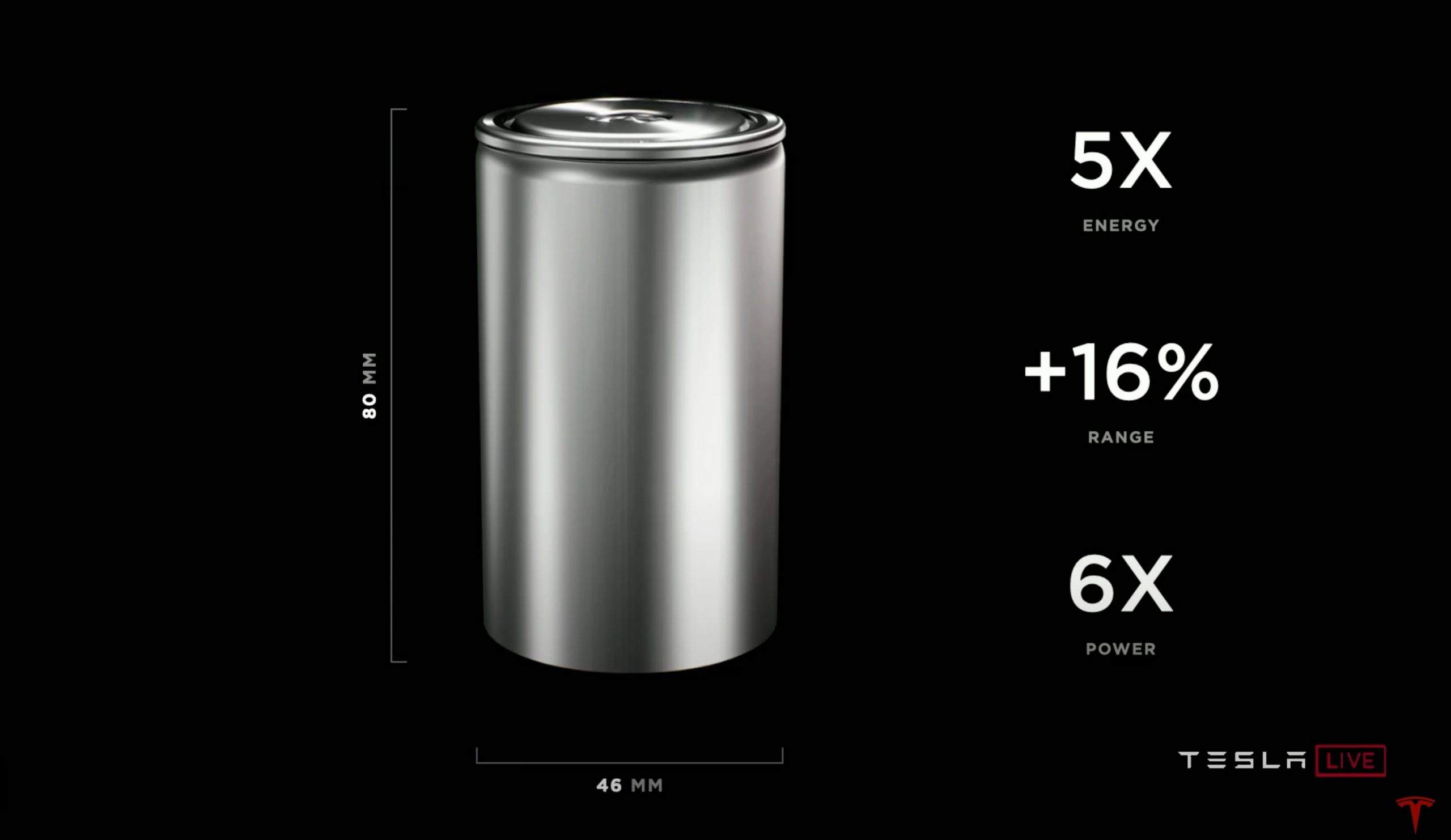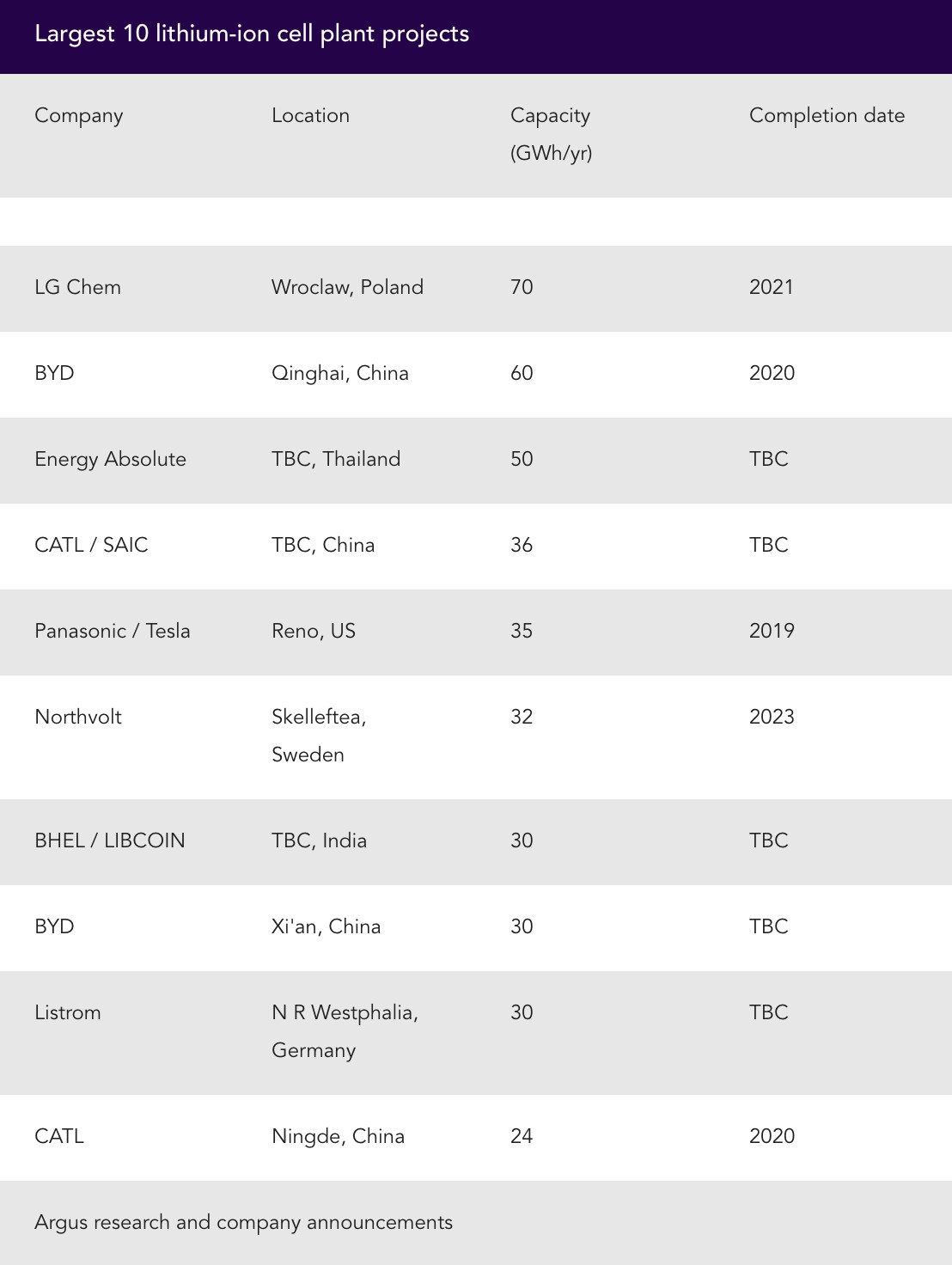

News
Tesla’s 4680 Kato Rd. facility has a top 10 capacity, and it’s not even close to finished
Tesla CEO Elon Musk disclosed some details about the electric automaker’s 4680 cell plant last week. After stating that the facility is “probably in the top 10 battery cell factories on Earth despite being a pilot plant,” speculation began about how massive Tesla’s new facility that sits just across the street from the Fremont production facility is. Although it is in the top 10, it’s not even close to finished.
Tesla’s introduction of the 4680 battery cell came in September 2020 at the Battery Day event. Musk and others outlined the company’s roadmap for global EV dominance through the most important part of an electric car: the cell. The new cell has 500% more energy, six times the power of the old 2170 cells, and also offers dramatic range increases for more drive time between charges. It was truly revolutionary because Tesla is already the most notable company in electric cars.
With a considerable lead in the EV sector, Tesla was effectively announcing, “eat our (sustainable) dust” after showing the new 4680 cells. Some were skeptical, believing that the new cell wouldn’t be available for some time. Musk immediately silenced those doubts, indicating that the new cells had been deployed in working vehicles for months.
Credit: Tesla
The point is, the Kato Road facility, as it is widely known as, is one of the largest facilities in the world. While we are not sure what the current capacity is, if it is a top 10 facility in terms of capacity, we can speculate how big it may be.
According to Argus Media, the 10 largest battery cell plants range from 24 GWh per year to 70 GWh per year. The largest, an LG Chem facility in Wroclaw, Poland, has the 70 GWh capacity, leading BYD’s Qinghai, China plant by 10 GWh. Tesla and Panasonic’s joint venture at Gigafactory 1 in Nevada is a 35 GWh per year facility, making it the fifth-largest plant globally.
Credit: Argus Research
Because Tesla’s Kato Road facility is a pilot plant, we can likely assume that it is within the bottom half of this list. Especially with Gigafactory 1 being the fifth-largest, it is very likely that Kato Road is simply not producing as many cells or as much battery capacity as Giga 1, but it’s not to say that this won’t happen. The issue is that Tesla is still battery constrained, even with a large-scale facility in Nevada and with several third-party manufacturers pumping cells to the automaker at a massive rate. Kato Road will contribute to the solution to the constrained problem, and the facility will likely be significantly larger than Giga 1, considering the projects that Tesla plans to fulfill with the 4680 cells, the largest being the Tesla Semi.
The Semi is still not ready for production, Musk said on the Q4 Earnings Call last week. “We will have cells group in ourselves for Semi when we were producing the 4680 volume. But for example, Semi would use typically five times the number of cells that a car would use, but it would not sell for five times what a car would sell for. So it kind of doesn’t make…it would not make sense for us to do the Semi right now,” Musk said. The issue is cell availability, and since the Semi is going to equip Tesla’s newest 4680 project, it is safe to assume that Kato Road still has some expanding to do. If it is already a top 10 facility, yet it is still not ready to take on the massive Semi task, along with all of the other vehicles it will eventually fulfill, Kato Road may become a top 3 facility.
Ultimately, Tesla requires more cells. With no plans to eliminate purchases from third-party suppliers in the near-term, Tesla wants to increase purchases from those suppliers. CATL, Panasonic, and LG Chem could supply Tesla with more batteries moving forward, even with the Kato Road facility’s expansion and ramping up. The fact is, Tesla isn’t done solving the battery constraint issue, and it could battle with it for years to come. However, it won’t stop production from increasing because more cells are becoming available almost every day through supplier deals, increased outputs, and in-house manufacturing advancements, all of which make Tesla the company to beat for the foreseeable future.

News
Tesla FSD fleet is nearing 7 billion total miles, including 2.5 billion city miles
As can be seen on Tesla’s official FSD webpage, vehicles equipped with the system have now navigated over 6.99 billion miles.

Tesla’s Full Self-Driving (Supervised) fleet is closing in on almost 7 billion total miles driven, as per data posted by the company on its official FSD webpage.
These figures hint at the massive scale of data fueling Tesla’s rapid FSD improvements, which have been quite notable as of late.
FSD mileage milestones
As can be seen on Tesla’s official FSD webpage, vehicles equipped with the system have now navigated over 6.99 billion miles. Tesla owner and avid FSD tester Whole Mars Catalog also shared a screenshot indicating that from the nearly 7 billion miles traveled by the FSD fleet, more than 2.5 billion miles were driven inside cities.
City miles are particularly valuable for complex urban scenarios like unprotected turns, pedestrian interactions, and traffic lights. This is also the difference-maker for FSD, as only complex solutions, such as Waymo’s self-driving taxis, operate similarly on inner-city streets. And even then, incidents such as the San Francisco blackouts have proven challenging for sensor-rich vehicles like Waymos.
Tesla’s data edge
Tesla has a number of advantages in the autonomous vehicle sector, one of which is the size of its fleet and the number of vehicles training FSD on real-world roads. Tesla’s nearly 7 billion FSD miles then allow the company to roll out updates that make its vehicles behave like they are being driven by experienced drivers, even if they are operating on their own.
So notable are Tesla’s improvements to FSD that NVIDIA Director of Robotics Jim Fan, after experiencing FSD v14, noted that the system is the first AI that passes what he described as a “Physical Turing Test.”
“Despite knowing exactly how robot learning works, I still find it magical watching the steering wheel turn by itself. First it feels surreal, next it becomes routine. Then, like the smartphone, taking it away actively hurts. This is how humanity gets rewired and glued to god-like technologies,” Fan wrote in a post on X.
News
Tesla starts showing how FSD will change lives in Europe
Local officials tested the system on narrow country roads and were impressed by FSD’s smooth, human-like driving, with some calling the service a game-changer for everyday life in areas that are far from urban centers.

Tesla has launched Europe’s first public shuttle service using Full Self-Driving (Supervised) in the rural Eifelkreis Bitburg-Prüm region of Germany, demonstrating how the technology can restore independence and mobility for people who struggle with limited transport options.
Local officials tested the system on narrow country roads and were impressed by FSD’s smooth, human-like driving, with some calling the service a game-changer for everyday life in areas that are far from urban centers.
Officials see real impact on rural residents
Arzfeld Mayor Johannes Kuhl and District Administrator Andreas Kruppert personally tested the Tesla shuttle service. This allowed them to see just how well FSD navigated winding lanes and rural roads confidently. Kruppert said, “Autonomous driving sounds like science fiction to many, but we simply see here that it works totally well in rural regions too.” Kuhl, for his part, also noted that FSD “feels like a very experienced driver.”
The pilot complements the area’s “Citizen Bus” program, which provides on-demand rides for elderly residents who can no longer drive themselves. Tesla Europe shared a video of a demonstration of the service, highlighting how FSD gives people their freedom back, even in places where public transport is not as prevalent.
What the Ministry for Economic Affairs and Transport says
Rhineland-Palatinate’s Minister Daniela Schmitt supported the project, praising the collaboration that made this “first of its kind in Europe” possible. As per the ministry, the rural rollout for the service shows FSD’s potential beyond major cities, and it delivers tangible benefits like grocery runs, doctor visits, and social connections for isolated residents.
“Reliable and flexible mobility is especially vital in rural areas. With the launch of a shuttle service using self-driving vehicles (FSD supervised) by Tesla in the Eifelkreis Bitburg-Prüm, an innovative pilot project is now getting underway that complements local community bus services. It is the first project of its kind in Europe.
“The result is a real gain for rural mobility: greater accessibility, more flexibility and tangible benefits for everyday life. A strong signal for innovation, cooperation and future-oriented mobility beyond urban centers,” the ministry wrote in a LinkedIn post.
News
Tesla China quietly posts Robotaxi-related job listing
Tesla China is currently seeking a Low Voltage Electrical Engineer to work on circuit board design for the company’s autonomous vehicles.

Tesla has posted a new job listing in Shanghai explicitly tied to its Robotaxi program, fueling speculation that the company is preparing to launch its dedicated autonomous ride-hailing service in China.
As noted in the listing, Tesla China is currently seeking a Low Voltage Electrical Engineer to work on circuit board design for the company’s autonomous vehicles.
Robotaxi-specific role
The listing, which was shared on social media platform X by industry watcher @tslaming, suggested that Tesla China is looking to fill the role urgently. The job listing itself specifically mentions that the person hired for the role will be working on the Low Voltage Hardware team, which would design the circuit boards that would serve as the nervous system of the Robotaxi.
Key tasks for the role, as indicated in the job listing, include collaboration with PCB layout, firmware, mechanical, program management, and validation teams, among other responsibilities. The role is based in Shanghai.
China Robotaxi launch
China represents a massive potential market for robotaxis, with its dense urban centers and supportive policies in select cities. Tesla has limited permission to roll out FSD in the country, though despite this, its vehicles have been hailed as among the best in the market when it comes to autonomous features. So far, at least, it appears that China supports Tesla’s FSD and Robotaxi rollout.
This was hinted at in November, when Tesla brought the Cybercab to the 8th China International Import Expo (CIIE) in Shanghai, marking the first time that the autonomous two-seater was brought to the Asia-Pacific region. The vehicle, despite not having a release date in China, received a significant amount of interest among the event’s attendees.








